Hydraulic Wood Splitter Components
Ah the glory of days gone by and the manual method of tiring endless hours spent with your axe and maul splitting wood and covering your hands with blisters. The log splitter changes all of that!
A log splitter is a machine with several components that make short order work of splitting firewood quickly and with much less effort. Before you shell a whole bunch of cash to buy or build a log splitter, lets review the wood splitter hydraulic components that make up this wood chopping machine.
Key Hydraulic Log Splitter Components Include:
-
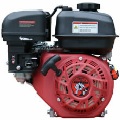 Hydraulic
fluid tank and hoses
Hydraulic
fluid tank and hoses -
Hydraulic pump
-
Hydraulic cylinder or ram
-
Hydraulic control valve
-
Wood splitter head or blade
-
Motor or power source
-
Splitting Wedge
The main factors that decide the power of your log splitter outside of the frame system that holds all the components, are the hydraulic cylinder, hydraulic pump, and the power source.
These three units are calculated in combination to determine the tonnage capacity of the wood splitter.

|
Generally there are three main types of power source:
-
Electric: Electric splitters are generally the most simplistic units and they are a popular choice for limited firewood needs and home use. Obviously you need to be near an electrical power source to use one of these which in turn is the detraction of these units as well.
-
Gas Powered: Gas powered units are the most popular since these log splitters can operate independently from any other power supply, (besides a can of gas). Gas operated splitters can produce much more force than electric units generally produce.
-
Tractor Powered PTO: Tractor or skid steer driven splitters are generally found on farms and in commercial forest and firewood operations. The splitters connect a tractor's hydraulic system that powers the PTO splitter unit in the manner for which it was designed. PTO log splitters models are usually extremely durable and made for commercial use..
Vertical or Horizontal Wood Splitter?
Stand alone hydraulic splitters come in horizontal and vertical units. Vertical units are preferred for heavy logs that can be rolled onto the splitter, whereas horizontal log splitters require you to lift the log up and place it on the unit for splitting.
The Hydraulic Cylinder or Log Splitter Ram
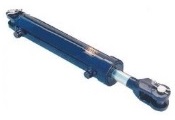 The
hydraulic cylinder as it the backbone of any hydraulic log splitter.
Its force the log into a metal wedge to split it into pieces (see splitting
wedge heads). These hydraulic cylinders can be mixed and matched to
the pump and power source but the hydraulic cylinder tonnage rating
must not be below the hydraulic pump tonnage rating. Otherwise the pump
pressure can damage the cylinder.
The
hydraulic cylinder as it the backbone of any hydraulic log splitter.
Its force the log into a metal wedge to split it into pieces (see splitting
wedge heads). These hydraulic cylinders can be mixed and matched to
the pump and power source but the hydraulic cylinder tonnage rating
must not be below the hydraulic pump tonnage rating. Otherwise the pump
pressure can damage the cylinder.
Cycle Time: The cylinders cycle time is how long it takes for the ramp to push forward into the wood and return back to its starting position. So obviously a multi direction cylinder is needed.
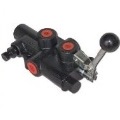 The
Hydraulic Control Valve
The
Hydraulic Control Valve
The hydraulic control valve includes a lever for operating the log splitter and transferring the hydraulic fluid in the right direction for the splitting stroke and the return stroke.
It's important that this valve be placed in a convenient location for easy access and safe operation.
The 2 Stage Hydraulic Pump
![]() Oil
capacity, pressure and operating time of the hydraulic pump needs to
be considered for calculating how it matches up to the motor and hydraulic
cylinder to produce the desired operating pressure and cycle time. This
includes important calculations so that you don't over pressure the
hydraulic cylinder.
Oil
capacity, pressure and operating time of the hydraulic pump needs to
be considered for calculating how it matches up to the motor and hydraulic
cylinder to produce the desired operating pressure and cycle time. This
includes important calculations so that you don't over pressure the
hydraulic cylinder.
The Log Splitter Wedge or Splitting Head
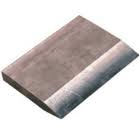 The
Head, Blade or Wedge of any log splitter is another key component to
consider when you are deciding what to build for a log splitter.
The
Head, Blade or Wedge of any log splitter is another key component to
consider when you are deciding what to build for a log splitter.
There are basically three different types of wedges that are typically found on log splitters:
-
Simple Two Way Splitting Wedge
-
Four Way Splitting Wedge
-
Six Way Splitting Wedge
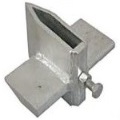 Simple
two way wedge: Similar to an axe, the splitting wedge splits the
wood in half to cut it into 2 pieces. It is most often welded directly
to the wood splitter unit on top of the main beam with reinforcement.
Simple
two way wedge: Similar to an axe, the splitting wedge splits the
wood in half to cut it into 2 pieces. It is most often welded directly
to the wood splitter unit on top of the main beam with reinforcement.
Four way splitting wedge: A 4 way splitting wedge will quarter the log into 4 pieces allowing you to get twice as much splitting done in the same amount of time in most cases.
These heads may be welded on but some models install over the top and bolt on to a two way wedge that is welded to the wood splitter main beam. This way they can be removed if desired. This also allows them to be removed for repair or sharpening.
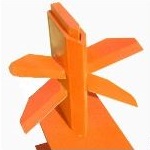 Six
way splitting wedge: The 6-way wedge is most often found on high-end
commercial log splitters, or as an accessory. They can be welded on
or bolted over a two way wedge as well. These heads allow a log to be
split into 6 different pieces. Due to the nature of these six way heads,
you will generally need a more powerful unit to take advantage of the
pressure required to make these multiple cuts through a log, especially
in hardwood.
Six
way splitting wedge: The 6-way wedge is most often found on high-end
commercial log splitters, or as an accessory. They can be welded on
or bolted over a two way wedge as well. These heads allow a log to be
split into 6 different pieces. Due to the nature of these six way heads,
you will generally need a more powerful unit to take advantage of the
pressure required to make these multiple cuts through a log, especially
in hardwood.
If you are buying or building a log splitter you should check to see what additional wedges are available as accessories. Getting the right blade for your type of splitting needs can save you time and effort. On the other hand, it may be wise to go with the w way and add a 4 way or 6 way accessory head so that you can remove it if desired for different log splitting tasks and needs. Again, it's also easier for repairs and sharpening.
How to build a log splitter?
For those who decide to build you own log splitter, keep in mind that safety is everything and while you may use one of our plans or someone else's, alterations are common but safety should always be considered first. Making sure all component are up to the pressure produced is important.
Most build-it-yourself plans are often altered by the fabricator
in order to use available supplies they already have. Usually building
a wood splitter starts with one or more components that you may already
have left over in your yard or workshop. An old hydraulic cylinder or
Briggs and Stratton motor that has been sitting around the shop. Or
even an old I-beam and other
metal out in the yard.
Starting with some basic parts to build your own log splitter can be
a great way to save some money. Just be sure that safe operation is
being considered for the end result!